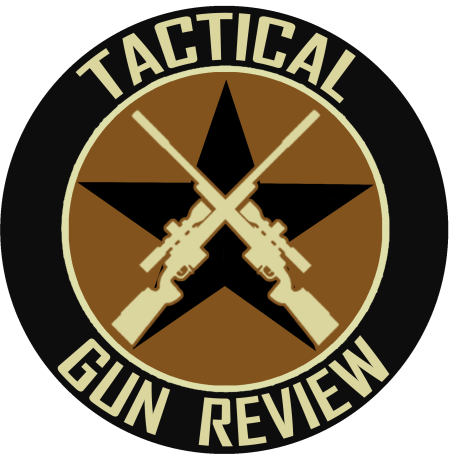My second year in Iraq, I took along a MSA TC2000 ballistic helmet. More commonly known as the MICH (or in the Army, the ACH), this helmet provides level IIIA protection from fragments and pistol rounds. Why did I buy my own instead of taking what the Army would give me at CIF down in Ft. Benning? Easy; I was a contractor and the Army hated my guts.
My first year in Iraq, the Army issued me a PASGT helmet. What an absolute worthless piece of kit that was. Oh, it provided cranial protection, but did so in the most uncomfortable way possible. Having the helmet’s weight rest on a circle of 550 paracord on the top of your skull can be downright painful. Why the military didn’t go with a 3-point or 4-point chinstrap years ago (as the Germans did in WWII), I’ll never know. I bought a surplus German Kevlar helmet that’s much more comfortable than the PASGT.
But this article is about the MICH helmet I wore, which is miles more comfortable than the PASGT. And yes, comfort is a major factor. While some of you out there may be saying, “Suck it up!” I’ll garner that you’ve never had to wear a helmet before. Oh sure, maybe you’ve worn one for a few minutes while at a gun show, but have you ever HAD to wear one? The PASGT will give you a headache, even if you’re just wearing it while sitting in a vehicle. The danger is that you’ll take it off. If you take your helmet off because it’s uncomfortable, your head is unprotected.
Protection
Keeping your head intact is what the helmet is all about. Contrary to what you may see in the movies, helmets are not made to protect against direct rifle fire. They will protect against fragmentation, and in some cases, pistol fire. In order to test the MSA helmet, I took an extra one (that I’d picked up in Iraq) out to the range for testing. As you’ll see in the video below, it deflected 4 rounds of 9x19mm out of a SIG Sauer P226 handgun. Further, it did stop a .45 ACP from a Glock 21. You can see the impact from one of the pistol rounds on the right in the picture below.
Of course, this helmet will not protect you from rifle fire. Rounds such as the 5.56x45mm, 5.45x39mm, and 7.62x51mm will go right through, even at range. As you can see in the following video, standard ballistic helmets are NOT meant to stop rifle fire. In the above picture, a round of 5.45x39mm entered the helmet at the top left. It arced up, shredding the Kevlar on the interior of the top of the helmet. Along the way, the tip of the 7N6 round, with its hollow air pocket, broke off from the main body and remained in the Kevlar layers. The 22-grain mild steel core exited the far side of the helmet and traveled into the berm behind it.
Lesson: Don’t get shot in the head.
Concealment
Because I’m in a temperate environment (and the helmet I bought was painted tan), I added a Tactical Flecktarn Helmet Cover, which is much better than the surplus German helmet cover. In addition, I’ve modified a Swedish Military Helmet Cover net. It comes with both ear flaps and a baseball-like bill. After removing these, I cut up the flaps into strips to use as ghillie/scrim for the netting. In addition, I cut the sleeves off of a Norwegian Air Force Camo shirt to produce more strips of cloth. Lastly, I added some strips of cloth from Turkish 1940s 8mm Mauser bandoleer.
The scrim woven in the helmet netting does an excellent job of breaking up the outline of the helmet and head. The human eye recognizes shapes very easily, and a helmeted head has a very distinctive profile. The bushrag appearance of the scrimmed-up net helps prevent this instant recognition.
Accessories
If you’re a super-cool tactical operator, you might want to add a Surefire HL1-A helmet light. You can find them for a much-reduced price elsewhere on the Internet. A buddy of mine gave me one he was no longer using. While it’s a nifty little device, I don’t find it all that useful. It does have an IR light which can identify you to friendly forces using night vision, but the flashlight is rather weak. Also, the plastic clip that it uses to attach to the helmet can be easily broken. I tossed my helmet in the corner and the light popped off. It now won’t stay clipped on if there’s any kind of force exerted on it at all. Overall, too fragile
You know what’s not too fragile? The Contour ROAM video camera, that’s what. This little beast is hearty and takes a beating. I know, because I’ve got it mounted on my helmet and I’ve dropped my helmet right on the camera, multiple times. I’ve also drunkenly tried to slide the camera onto the rail that’s mounted to the side of my helmet and only engaged one rail. I got the little thing so jammed up that I had to hammer it back off with the heel of my hand. Was there any damage to the camera? Nope.
Conclusion
If you’re going to wear a brain bucket, it needs to be comfortable and capable of keeping fragments of metal away from your cranium. Choosing a steel helmet because it’s cheap isn’t really such a good idea. This helmet may provide some sort of protection against fragments, but not nearly as much as Kevlar. Steel helmets are fine for re-enacting. If you want something that will actually keep your brains from being turned into pâté , get a MCH 2000.
– By Allen Cosby
Latest posts by 53gr (see all)
- H&H Medical: H Bandage and Thin H Bandage - January 2, 2020
- S&W M&P M2.0 Series - January 9, 2017
- SIG Sauer P938 - October 19, 2016









Recent Comments